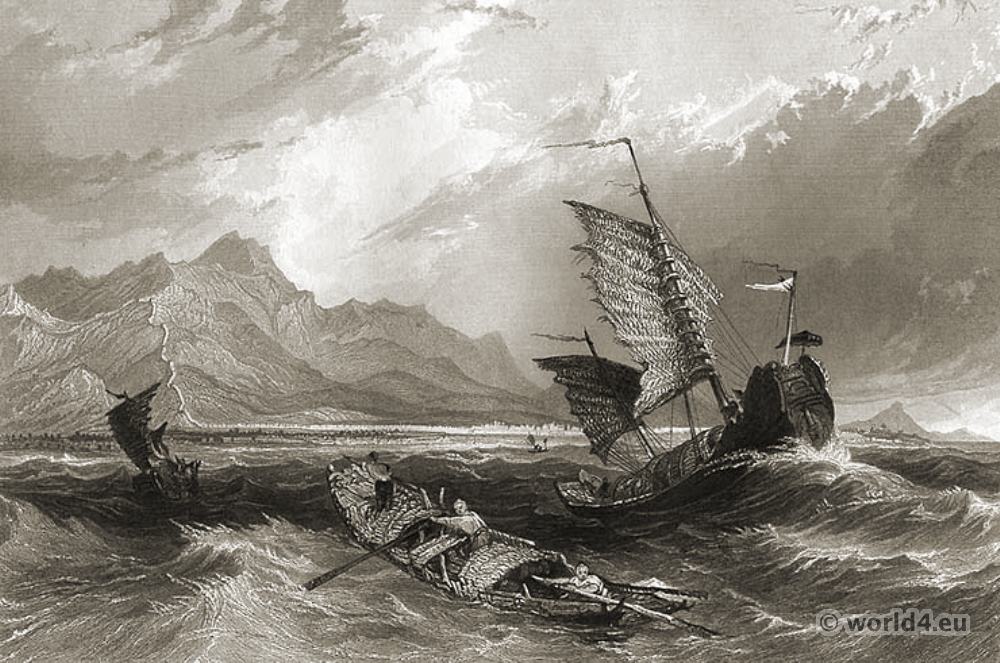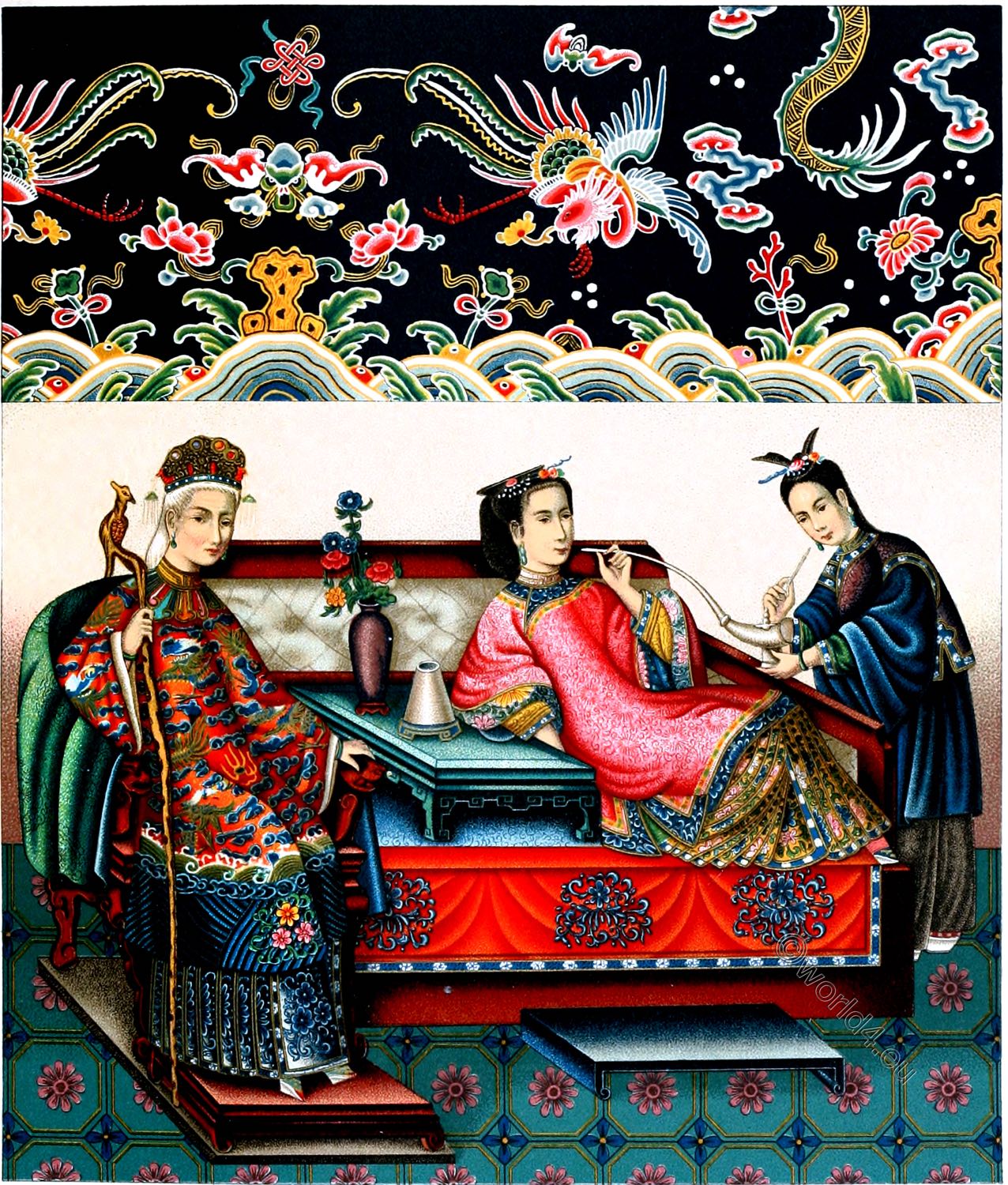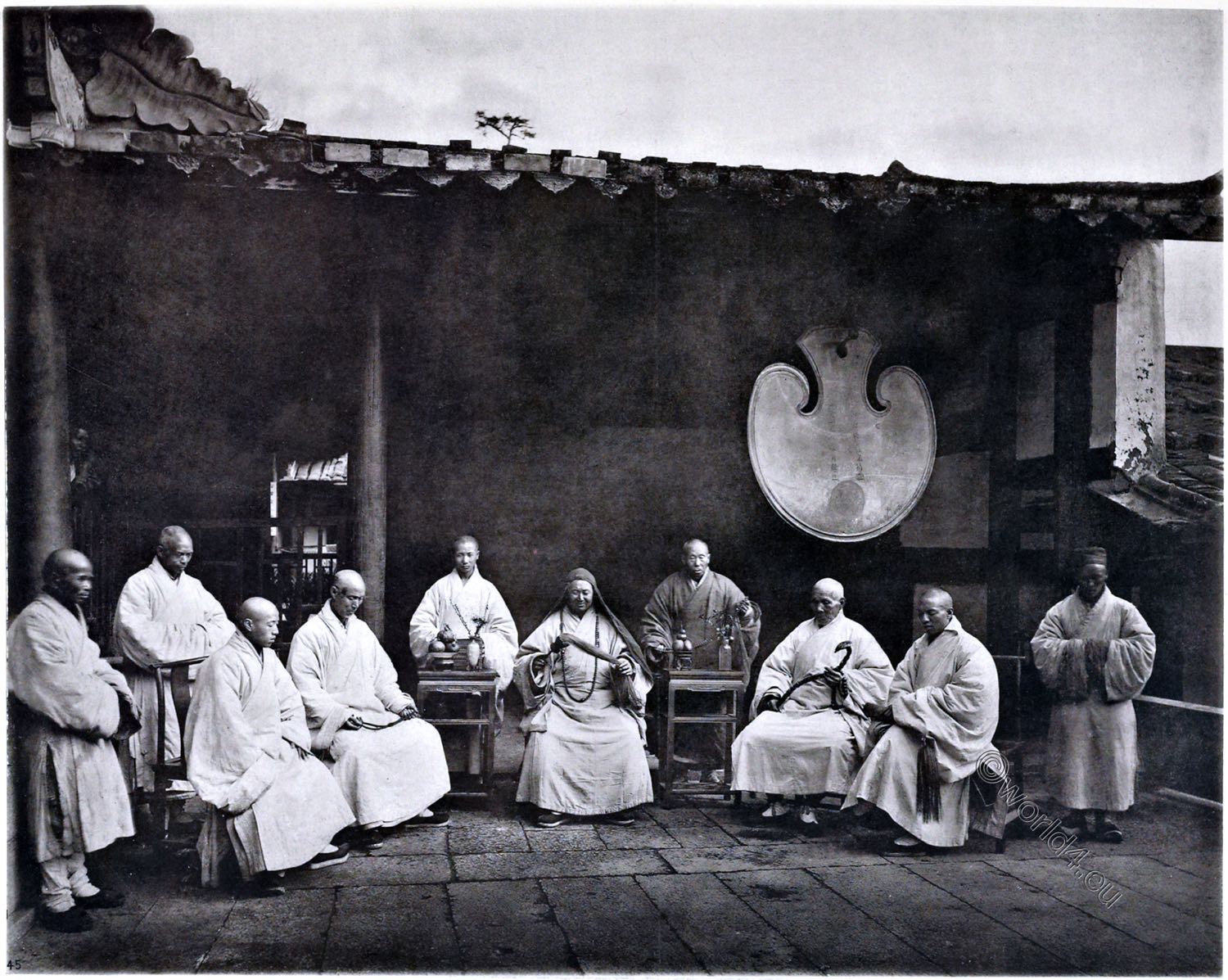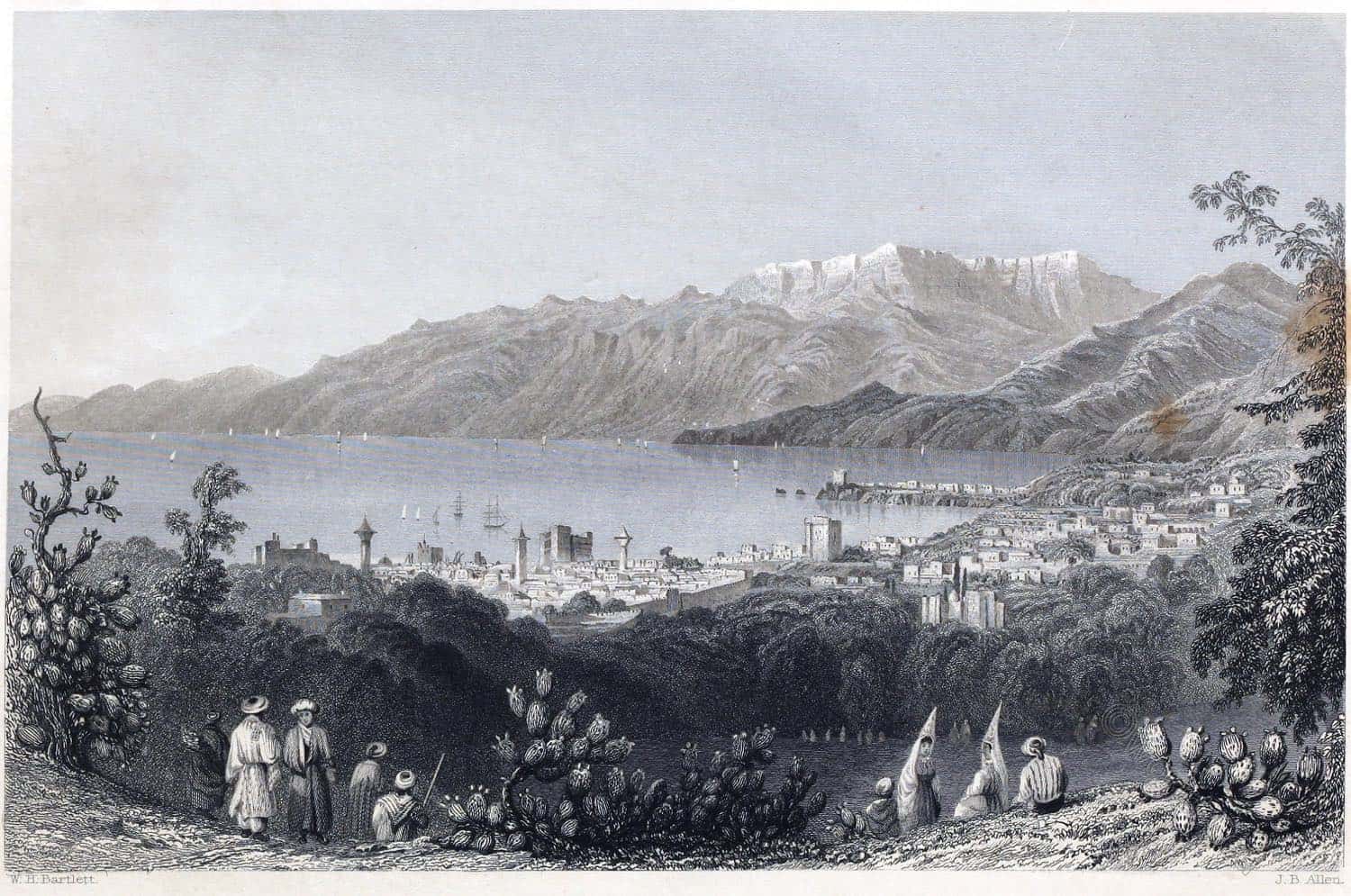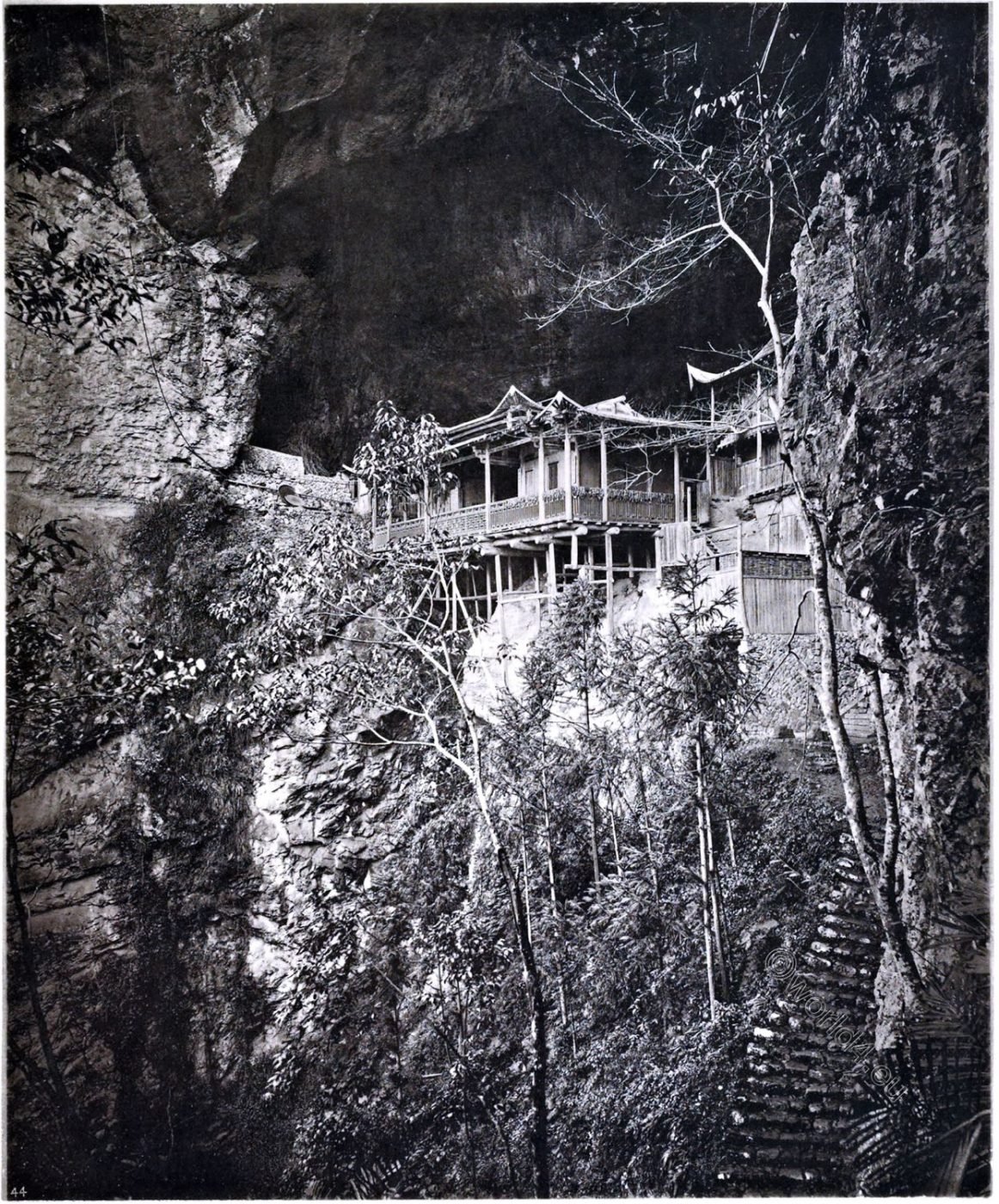
Yuen-fu Monastery Cave, Fukien province, China. John Thomson (photographer).
THIS Buddhist monastery is remarkable rather for its romantic situation than for any historical associations. To reach it we must ascend that branch of the Min which falls into the main stream, on the south, nearly opposite the centre of the long island formed by the river dividing into two streams seven miles above Foochow, and re-uniting at Pagoda Anchorage.
The monastery is about thirty miles distant from Foochow in a very mountainous and richly wooded country, which reminded me of the scenery of the Trosachs, the bold rocky outlines of the hills and glens on both sides of the river being here toned down by a profusion of foliage. The sacred edifice rests in a cavern on the summit of a mountain, and is only reached after a tedious and precipitous ascent.
To this place many pilgrims resort, and I can well fancy the weary devotee pausing as he climbs to rest beneath the shade, and to admire the sublimity of the scenery around. Sacred texts from the classics are everywhere sculptured on the rocks, and it is in a dark recess, resting on a ledge of solid stone, with a frowning precipice of great depth in front, that this remarkable shrine has been constructed. The cave has been formed by the fall of a great mass of rock into the ravine beneath, where it has been overgrown with trees probably centuries old.
A natural tunnel under this rock affords a covered way to the monastery, and above it the path leads us through a rocky chasm, roofed over with gigantic ferns. The quaint establishment, propped upon the stony projection, presents a very temporary and insecure appearance; this only applies, however, to the front of the monastery, as all the inner buildings are supported on a solid rock basis. There are three monks permanently attached to the building; one of them was a mere boy and full of vivacity, the second was an able-bodied, good-natured youth, and the third was very old, infirm, and blind.
These recluses appeared to be extremely strict in their ritualistic observances; waking me every morning at sunrise by the wailing of their chants, by ringing their bells, and beating their gongs. Their meals, according to the practice of their order, consisted wholly of vegetable food, and tobacco was a luxury in which they freely indulged. Nevertheless I strongly suspect the old man to have been an opium smoker.
The water supply was obtained by a hollow bamboo rope, which had one end inserted in a spring above the projecting cliff, over which this bamboo duct was suspended, as shown on the left of the photograph No. 44, while the lower end communicated with a stone tank into which the water was allowed to flow.
Source: Illustrations of China and its people: a series of two hundred photographs, with letterpress descriptive of the places and people represented by John Thomson. London: Sampson Low, Marston, Low, and Searle 1873.
Related
Discover more from World4 Costume Culture History
Subscribe to get the latest posts sent to your email.


